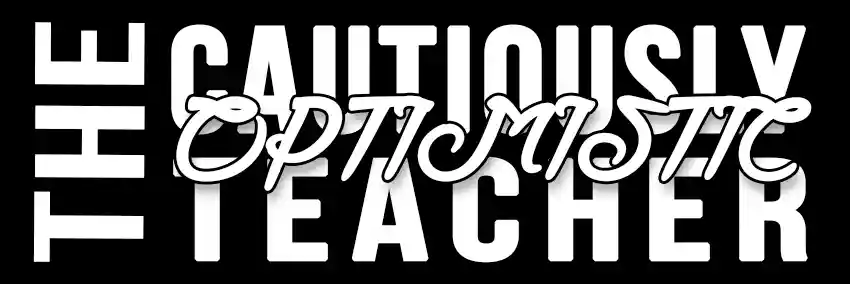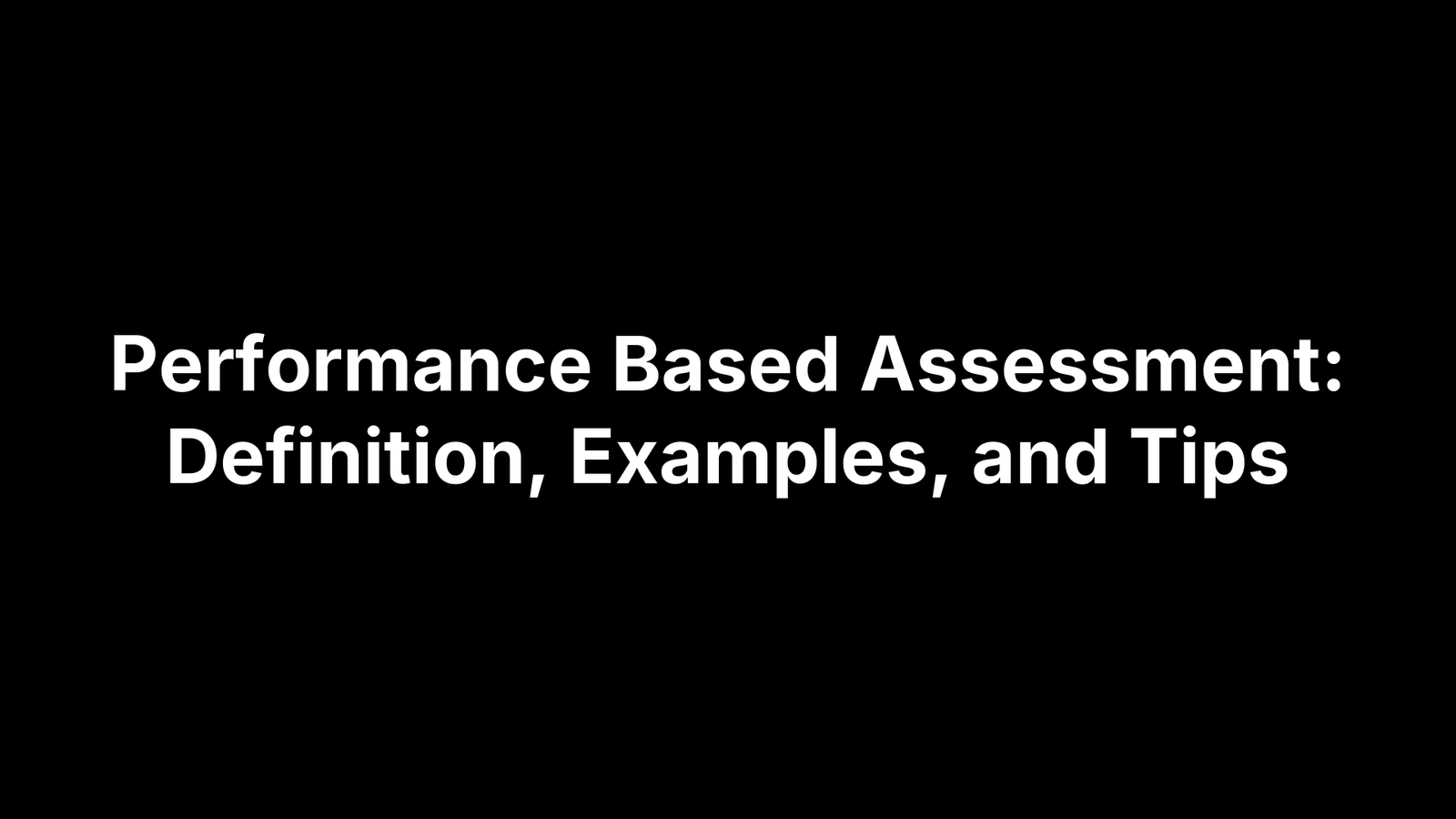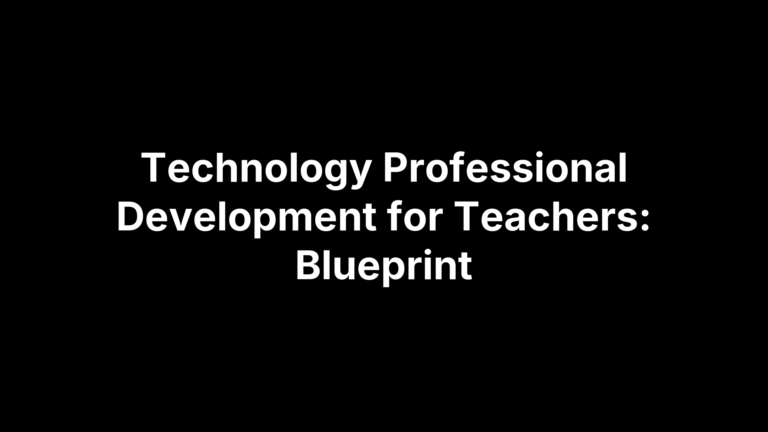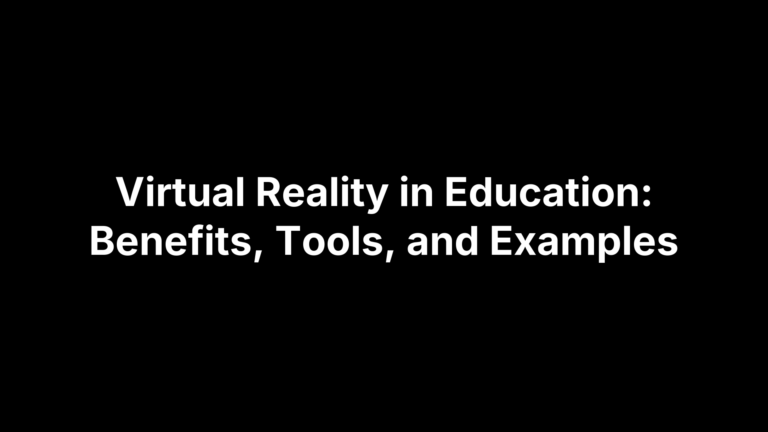Performance Based Assessment: Definition, Examples, and Tips
Performance-based assessment asks students to show what they can do—through a project, performance, or problem solution—rather than choose a bubble on a scan sheet. By shifting the spotlight from recall to real-world application, it captures the very skills multiple-choice tests often miss. In the next few minutes, you’ll see concrete classroom examples, planning templates, and scoring tips you can put to work right away.
Teachers across the country are embracing this approach because it nurtures collaboration, creativity, and critical thinking—the traits employers and college rubrics prize—and because it answers growing doubts about the fairness of one-size-fits-all exams. This article starts with a clear definition, then walks through research-backed benefits, step-by-step task design, rubric creation, and practical time-saving hacks. You’ll find subject-specific examples for STEM, ELA, social studies, and the arts, a troubleshooting guide for common hurdles, and quick answers to the questions principals and parents love to frequently ask online.
What Is Performance-Based Assessment?
A performance-based assessment (PBA) is an evaluation in which students do something authentic—build, present, solve, or perform—while teachers judge the quality against explicit criteria. Born from the authentic-assessment movement championed by Grant Wiggins and Jay McTighe, the term now covers everything from ten-minute science labs to year-long senior exhibitions.
Formal definition and core concept
Two non-negotiables define a PBA:
- Observable student performance (process, product, or both)
- Pre-established criteria that spell out what success looks like
Because both steps are visible, PBAs capture reasoning, creativity, and skill execution, not just the final answer.
Performance vs product vs process: the spectrum
| Type | Student Evidence | Quick Example |
|---|---|---|
| Process-oriented | Real-time actions | Think-aloud math proof |
| Product-oriented | Tangible artifact | Edited podcast episode |
| Hybrid | Both | Lab procedure + written report |
Performance-Based vs traditional tests: key differences
- Application over recall
- Real-world context vs abstract prompts
- Rubric scoring vs right/wrong keys
- Emphasis on higher-order thinking and student agency
- Multiple standards assessed simultaneously
Common formats: tasks, projects, portfolios, exhibitions
- Task: single-class challenge, ideal for quick checks
- Project: multi-week inquiry ending in a deliverable
- Portfolio: curated collection showing growth over time
- Exhibition: public showcase with live questioning, perfect for capstones
Why Performance-Based Assessment Improves Learning Outcomes
When designed well, a performance based assessment does more than generate a grade; it becomes part of the learning itself. Research and classroom evidence point to four payoffs that traditional tests struggle to match.
Cognitive benefits: deeper learning and transfer
Students must analyze, synthesize, and evaluate information to create a product or performance, pushing them into the top tiers of Bloom’s taxonomy. Because they apply ideas in novel contexts—say, using Newton’s laws to build a working mousetrap car—knowledge sticks and transfers to future problems.
Student motivation and engagement
Autonomy and relevance skyrocket when learners choose topics, formats, or audiences. A ninth-grader who records a podcast on a self-selected social issue typically invests far more effort than on a fill-in-the-blank worksheet, boosting persistence and pride.
Teacher insight and instructional adjustment
Rich artifacts reveal misconceptions, partial understandings, and creative leaps in ways bubble sheets cannot. Mid-project checkpoints let teachers reteach a faulty step or extend a student who is ready for more complexity, making assessment truly formative.
Promoting equity and culturally responsive practice
Multiple ways to demonstrate mastery—videos, bilingual infographics, community presentations—honor diverse cultural funds of knowledge and language profiles. Aligning tasks with Universal Design for Learning principles widens access while maintaining rigorous, clearly articulated criteria.
Key Features of a High-Quality Performance Task
Whether you’re planning a quick in-class challenge or a multi-week showcase, a rock-solid performance task hinges on five elements. Run this checklist and revisions become tweaks, not triage.
Alignment with standards and learning objectives
Start by unpacking the verbs in your state or district standards. Each verb becomes an observable action students must perform—and a future row on the rubric.
Authentic context, audience, and purpose
Frame the work as something real people actually do: analyze local water data for the parks department, design a public-service TikTok, brief a city council. Relevance boosts effort.
Clear success criteria and rubrics
Publish expectations on day one. An analytic rubric with four levels typically offers:
- Content accuracy
- Skill execution or technique
- Craft/communication quality
- Reflection and revision evidence
Manageable scope, timing, and resources
Match task length to instructional minutes and materials you can actually supply. A one-period “mini-PBA” often beats an epic project that devours weeks.
Opportunities for reflection and metacognition
Build in quick writes, exit tickets, or video self-critiques so students articulate what worked, what fizzled, and how they’ll improve next time.
Real-World Examples Across Subjects and Grade Levels
The best way to grasp performance based assessment is to see it in action. The five snapshots below are classroom-tested and standards-aligned; each lists the deliverables students produce and the rubric angle teachers typically emphasize.
STEM example: conducting an experiment and publishing results
Grade 7 science students collect neighborhood water samples, run pH and turbidity tests, and compare findings to EPA benchmarks. Deliverables: a formal lab report (NGSS MS-ETS1-4) plus a one-page infographic for the city council. Scoring spotlights data accuracy and evidence-based conclusions.
ELA example: crafting and delivering a persuasive speech
High-schoolers research a school-policy issue, write a 600-word speech, then present it live or on video. CCSS.ELA-LITERACY.SL.11-12.4 guides the rubric—logic of argument, rhetorical devices, and vocal delivery.
Social studies example: policy brief for a community issue
In civics, students analyze local housing affordability data and draft a two-page policy brief with APA citations (NCSS D2.Civ.13). Assessment focuses on source quality, proposed solutions, and concision.
Arts example: portfolio review and live performance
Visual-arts students curate a digital portfolio of ten works and host a gallery night, explaining technique and intent. Rubric targets artistic growth, craftsmanship, and audience interaction.
Interdisciplinary capstone: design thinking project
Teams design an eco-friendly product, build a prototype, and pitch it “Shark Tank” style. Standards span STEM engineering, ELA speaking, and Entrepreneurship. Judges score feasibility, creativity, and presentation polish.
Quick-fire ideas you can steal tomorrow:
- World language interview with a native speaker
- PE skills demo and biomechanics analysis
- Coding a simple app to solve a campus problem
- Math “escape room” students design for peers
- Music composition scored against genre conventions
- Environmental science photo essay with geotagged data
- Early-elementary makerspace model of a community helper’s tool
How to Design and Implement Performance-Based Assessments Step by Step
Moving from a bright idea to a polished performance task is easier when you follow a repeatable workflow. The six phases below blend Understanding by Design principles with pragmatic classroom management tricks, letting you scale up—or pare down—without losing rigor.
Backward design: starting with end goals
Begin with Stage 1 by pinpointing priority standards and the transferable skills they demand. In Stage 2, sketch the evidence you want to see—observable behaviors, not vague “understanding.” Finally, map Stage 3, the learning experiences that equip students to succeed on the task.
Developing the task and support materials
Write a short scenario that nails down Role, Audience, Format, Topic, and Strong verb (RAFTS). Attach clarifying documents—checklists, mentor texts, and a timeline with interim deadlines—to keep students oriented and reduce hand-raising chaos.
Building analytic or holistic rubrics
Pull criteria directly from the verbs in your standards: analyze, justify, prototype. An analytic rubric with four performance levels (“Exceeds,” “Meets,” “Approaches,” “Beginning”) offers targeted feedback; a holistic scale speeds scoring when time is tight. Share rubrics at task launch to arm students with a success roadmap.
Managing classroom logistics and time frames
Plot milestones on a project calendar posted in plain sight. Use color-coded group folders, material sign-out sheets, and five-minute daily stand-ups to track progress. For multi-week work, reserve mini-lessons to tackle common skill gaps just-in-time.
Providing formative checkpoints and feedback loops
Schedule quick conferences, peer critique circles, or digital comments midway through creation. Feedback should be specific (“Your evidence lacks currency”) and actionable (“Replace 2016 data with the latest Census table”).
Collecting evidence and reflecting with students
Archive artifacts in a shared drive or LMS folder for easy retrieval. Close the loop with self-grade sheets and a short reflection prompt: “What strategy made the biggest impact on your final product, and why?” These metacognitive moments turn assessment into learning fuel.
Scoring, Feedback, and Data Use
Finishing a performance task is only half the story; how you score it and use the evidence determines whether the effort translates into growth. These four moves keep feedback trustworthy, student-centered, and instructionally actionable.
Rubric calibration and reliability
Prevent wide grade swings by norming: invite a colleague, independently score the same student work, then debate differences until language and performance-level anchors match.
Student self-assessment and peer review strategies
Give learners a trimmed version of the rubric plus sentence stems like “Evidence shows …” so they can critique drafts before you ever see them.
Converting performance scores to grades fairly
Weight criteria, not points, then translate rubric levels to a narrow score band—e.g., 4 = 95, 3 = 85—to protect rigor without grade inflation.
Using data to inform instruction and report progress
Sort rubric rows in a spreadsheet, color-code emerging patterns, reteach the weakest criterion next day, and share narrative highlights with parents at conference time.
Overcoming Common Challenges and Misconceptions
Even experienced teachers hesitate before jumping into performance tasks. The tips below neutralize common headaches.
Addressing time and workload concerns
Start with a one-period mini task, recycle rubrics across units, and co-grade with a colleague to slash marking time.
Minimizing bias and ensuring fairness
Use culturally responsive prompts, blind-score anonymized work, and anchor each rubric level with sample artifacts to tighten scorer agreement.
Scaling PBAs in large classes
Group students but assign individual checkpoints, rotate through conference stations, and collect digital submissions to keep oversight manageable.
Leveraging digital tools to streamline assessment
Free LMS checklists, voice-note feedback apps, and AI rubric generators eliminate paper shuffling and return comments within minutes.
Communicating value to parents and stakeholders
Share short video recaps of student products, link rubrics to standards, and explain that PBAs capture graduate-profile skills tests miss.
Quick Answers to Frequently Asked Questions
Need the scoop fast? The micro-FAQ below has you covered today.
Example of performance-based assessment?
Seventh-graders test water and publish infographic.
Performance-based assessment process?
Launch, research, draft, feedback, revise, reflect.
Key characteristic?
Standards-aligned observable evidence of skill application.
Assessment vs performance-based approach?
Assessment judges final evidence; approach shapes daily instruction.
Sources for ready-made tasks?
State DOE banks, OER Commons, professional associations.
Final Thoughts
Performance based assessment flips the testing script: students show what they can do, teachers gain clearer insight, and learning becomes the main event. By pairing observable performances with transparent criteria, you collect evidence richer than any item bank can provide. The payoffs—deeper cognition, higher engagement, better instructional decisions, and greater equity—arrive when tasks align to standards, mirror real work, and build in reflection.
Start small with a single-period challenge, scale up to an interdisciplinary capstone, and lean on rubrics, checkpoints, and digital tools to keep workloads sane. Remember to calibrate scores, invite student self-assessment, and mine the data for next-step teaching moves.
Ready to try? Browse the free templates, task banks, and AI helpers waiting for you at The Cautiously Optimistic Teacher. Your students’ next performance might just be their best assessment yet.







